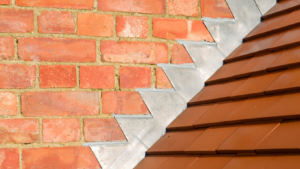Roof leakage caused by faulty flashing can lead to significant water damage and costly repairs. In this informative article, we will explore effective techniques to address roof leakage and provide expert advice on identifying and rectifying flashing issues. We will discuss common signs of flashing damage, steps to stop leaks, and professional tips for preventing future issues. Whether you are a homeowner or business owner, this article will equip you with valuable insights and practical solutions to safeguard your property and maintain a safe environment.
Common Causes of Roof Flashing Leaks
Frequently, the common causes of roof flashing leaks can be attributed to improper installation, aging materials, or damage from severe weather conditions. Roof flashing is a crucial component of a roofing system as it helps to prevent water from seeping into the roof and causing damage. However, if not properly installed or maintained, flashing can develop leaks, leading to potential water damage and costly repairs.
One of the main causes of flashing leaks is improper installation. If the flashing is not installed correctly, gaps and spaces can form, allowing water to penetrate the roof. It is essential to hire a professional roofing contractor who has experience in proper flashing installation to ensure that it is done correctly.
Aging materials can also contribute to flashing leaks. Over time, flashing can deteriorate and become less effective at keeping water out. Regular flashing maintenance, such as inspecting for cracks or gaps and replacing worn-out materials, is crucial to prevent leaks.
Severe weather conditions can also cause damage to flashing, leading to leaks. Strong winds, heavy rain, and hail can cause the flashing to become loose, damaged, or dislodged. It is important to inspect the flashing after severe weather events and make any necessary repairs promptly.
Signs of Roof Flashing Damage to Look Out For 
When inspecting your roof for potential flashing damage, be on the lookout for signs of deterioration and water intrusion in order to address any issues promptly. Regular roof maintenance is crucial in preventing and identifying flashing damage, as it can help you avoid costly repairs and potential water damage to your home. It is important to note that even minor roof flashing damage can lead to significant leaks if left untreated.
One common misconception about roof flashing leaks is that they only occur during heavy rain or storms. While severe weather can certainly exacerbate the issue, flashing damage can occur gradually over time due to exposure to the elements, such as UV rays and temperature fluctuations. This means that leaks can happen even during mild weather conditions.
Some signs of roof flashing damage to look out for include visible rust or corrosion on the flashing material, loose or missing flashing, cracked caulking or sealant around the flashing, and water stains or discoloration on the ceiling or walls inside your home. If you notice any of these signs, it is important to take action immediately.
For minor roof flashing damage, there are some DIY solutions that you can try. These include applying roofing cement or sealant to small cracks or gaps in the flashing, tightening loose screws or nails, and replacing missing or damaged flashing. However, it is important to exercise caution and consult a professional if you are unsure about the extent of the damage or if the repairs seem beyond your capabilities.
Steps to Stop Roof Flashing Leaks
Regularly inspecting and maintaining your roof flashing is crucial in preventing and addressing leaks. By taking proactive steps, you can prevent further damage and costly repairs. Here are some important steps to stop roof flashing leaks.
- Regular Inspections: Conduct regular inspections of your roof flashing to identify any signs of damage or deterioration. Look for cracks, gaps, or loose flashing around chimneys, vents, skylights, and other areas where the roof meets a vertical surface.
- DIY Flashing Fixes: If you notice any minor damage, you may be able to fix it yourself using simple flashing repair techniques. Clean the area thoroughly, apply a roofing sealant, and secure the flashing back into place. However, for more extensive damage, it is best to consult a professional.
- Professional Repairs: When dealing with significant flashing damage, it is crucial to hire a professional roofing contractor. They have the expertise and tools to address the issue effectively and ensure a long-lasting repair.
- Regular Roof Inspections: In addition to inspecting your flashing, it is essential to schedule regular roof inspections by a professional. They can identify potential issues before they become major problems, saving you time and money in the long run.
Professional Tips for Preventing Roof Flashing Leaks
To ensure the prevention of roof flashing leaks, it is imperative to implement professional tips and techniques for proper installation and maintenance. By following these guidelines, you can minimize the risk of leaks and extend the lifespan of your roof:
- Regular Roof Inspections: One of the most effective ways to prevent flashing leaks is to schedule regular roof inspections by a professional. These inspections can identify any potential issues early on, allowing for timely repairs before they escalate into major problems. Additionally, professional roof inspections provide you with peace of mind, knowing that your roof is in good condition.
- Importance of Regular Roof Maintenance: Regular maintenance is crucial in preventing roof flashing leaks. This includes cleaning the gutters and downspouts, removing debris, and checking for any signs of damage. By keeping your roof clean and well-maintained, you can avoid clogged gutters and water accumulation, which can lead to flashing leaks.
- Avoid Common Installation Mistakes: When installing flashing, it is essential to avoid common mistakes like improper sealing, inadequate overlap, or using incorrect materials. Hiring a professional roofing contractor who has experience in flashing installation can help ensure that these mistakes are avoided.
